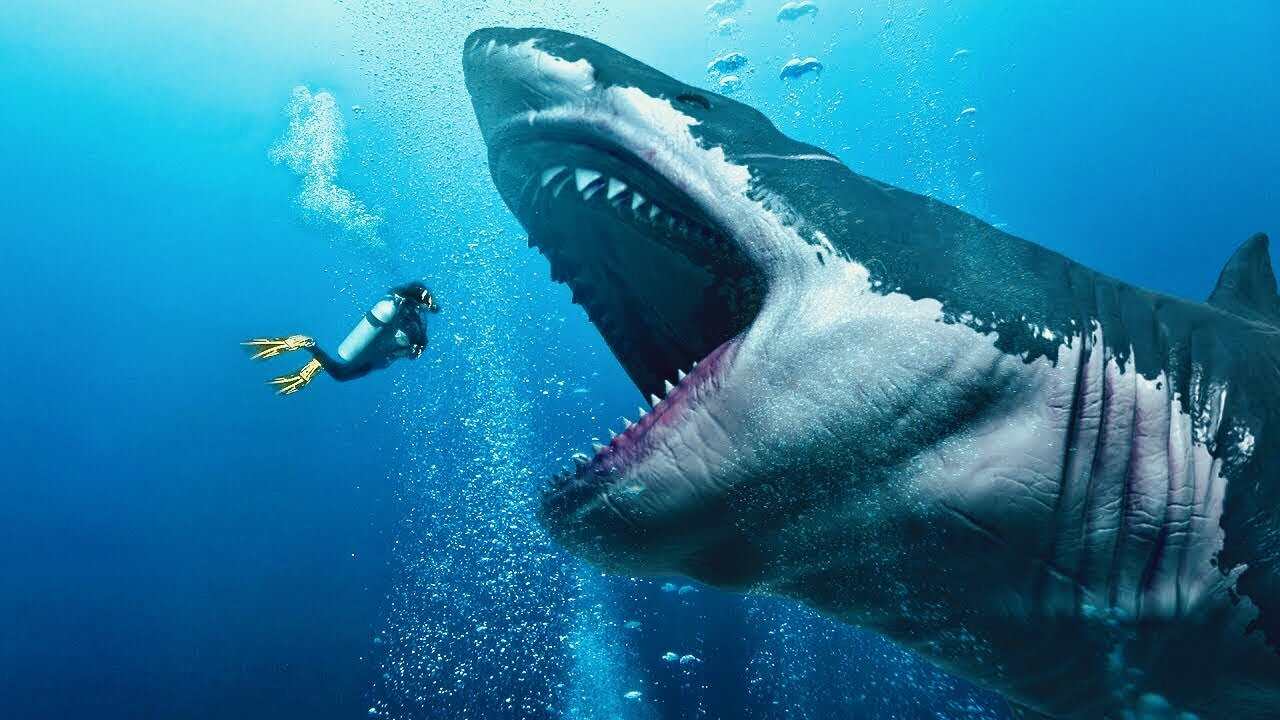Premium Only Content

The Biggest Fish That Ever Existed - Megalodon - Prehistoric Predators - Full Documentary
Megalodon was Earth’s highest-level apex predator – ever
Tooth analysis shows this prehistoric shark ate anything it wanted – including other predators. Sharks are often described as perfect killing machines. While this sort of negative press certainly doesn’t help conservation efforts today, there is some truth to this lethal impression of these magnificent beasts. And some were far more deadly than others.
In one form or another, sharks have patrolled Earth’s oceans for over 400 million years – since long before even the dinosaurs. The largest predatory shark and biggest fish known to science was megalodon, which ruled the seas until around 3 million years ago.
While its exact size is subject to debate, based on fossil teeth, megalodon may have been 15-18 metres long – three to four times the dimensions of the biggest great white sharks.
These monsters had jaws so wide a human could stand in them. Individual teeth were the size of an adult human hand.
No surprise then that recent research by palaeontologists at Princeton University in the US has shown that megalodon ate whatever it wanted – including other predators. The results of the research, published in Science Advances, indicate this ancient shark was an apex predator with no comparison in all of Earth’s history. “We’re used to thinking of the largest species – blue whales, whale sharks, even elephants and diplodocuses – as filter feeders or herbivores, not predators,” says the paper’s lead author, geoscientist Emma Kast, now based at the University of Cambridge, UK. “But megalodon and the other megatooth sharks were genuinely enormous carnivores that ate other predators, and Meg went extinct only a few million years ago.”
“If Megalodon existed in the modern ocean, it would thoroughly change humans’ interaction with the marine environment,” adds senior author Danny Sigman, professor of geological and geophysical sciences at Princeton.
Kast and Sigman’s team discovered clear evidence that megalodon and its ancestors occupied the highest rung of the prehistoric food chain – called the highest “trophic level”. So high is their trophic signature that the researchers believe megalodon must have eaten other predators and predators-of-predators in a complicated food web. Helping megalodon on its way to the top of the food web is cannibalism. There is evidence of cannibalism in both megatooth sharks and other prehistoric marine predators.
“Ocean food webs do tend to be longer than the grass-deer-wolf food chain of land animals, because you start with such small organisms,” says Kast. “To reach the trophic levels we’re measuring in these megatooth sharks, we don’t just need to add one trophic level – one apex predator on top of the marine food chain. We need to add several onto the top the modern marine food web.”
The team used a new technique to measure the nitrogen isotopes in fossilised megalodon teeth. The rule of thumb for ecologists is the more nitrogen-15 in an organism, the higher its trophic level. But this is the first time the tiny amounts of nitrogen preserved in these prehistoric teeth have been measured.
“We have a series of shark teeth from different time periods, and we were able to trace their trophic level versus their size,” says co-author Zixuan (Crystal) Rao.
Sometimes, prehistoric food webs can be gauged through bite marks on fossilised bones. But such evidence is scant for extinct sharks. The novel nitrogen isotope method helps paint a picture of an ancient fish-eat-fish world.
“The whole direction of my research team is to look for chemically fresh, but physically protected, organic matter – including nitrogen – in organisms from the distant geologic past,” says Sigman.
Organisms at the bottom of the food web, like plants and algae, absorb nitrogen from the air or water. When other species eat them, the predator species incorporates that nitrogen into their own bodies. But more of nitrogen’s lighter isotope, N-14, gets excreted (sometimes in urine) than the heavier N-15.
So N-15 builds up relative to N-14 as you go up in trophic level.
But there’s an unfortunate drawback. While researchers have had a whale of a time measuring nitrogen levels in animals as old as 15,000 years old, lack of preserved soft tissue in older species has made measuring nitrogen a dead end. Until now.
Luckily, teeth are more easily preserved because they are encased in rock-hard enamel which acts like a barrier to decomposing bacteria. And sharks have a lot of teeth which are constantly being replaced.
#history #evolution #dinosaur
-
 2:19
2:19
Seeker Land
2 months agoFunny - Democrats In Split Screen Saying LA Riots Are Peaceful
90 -
 LIVE
LIVE
shyboyking
4 hours agoThe Bots Of The Bots !!!😎
145 watching -
 24:06
24:06
True Crime | Unsolved Cases | Mysterious Stories
5 days ago $0.20 earnedShe Traveled Alone… and Never Came Back – 5 Mysterious Unsolved Cases (Part 6)
26.6K6 -
 27:23
27:23
Clickbait Wasteland
18 hours ago $0.05 earnedAsking New Yorkers Who They Support For Mayor: Staten Island
28.5K14 -
 16:58
16:58
World2Briggs
1 day ago $0.06 earnedThe California Rant: Point Blank With No Fluff or BS. California Gold?
18.1K4 -
 17:49
17:49
Chris Harden
2 days ago $0.03 earnedThe Glass Capital That Shattered | The Decline of Streator, Illinois
13.4K4 -
 51:15
51:15
JohnXSantos
3 days ago $0.02 earnedClothing Brand Manufacturers + Winners
8.8K2 -
 10:06
10:06
Cyclops Videos Joe W Rhea
12 days agoHybrid Super 22 Rifle
9.41K1 -
 8:30
8:30
Millionaire Mentor
1 day agoMaria Bartiromo Plays Clip That DESTROYS Adam Schiff’s Entire Story
6.95K5 -
 27:32
27:32
The Finance Hub
1 day ago $0.08 earnedBREAKING: JD VANCE JUST DROPPED A MASSIVE BOMBSHELL!!!
4.53K10